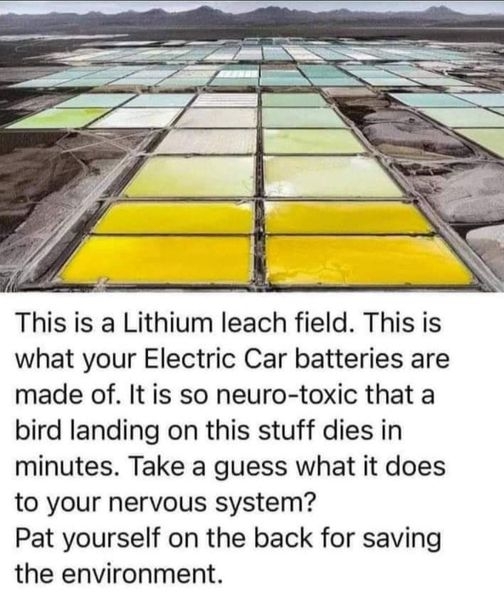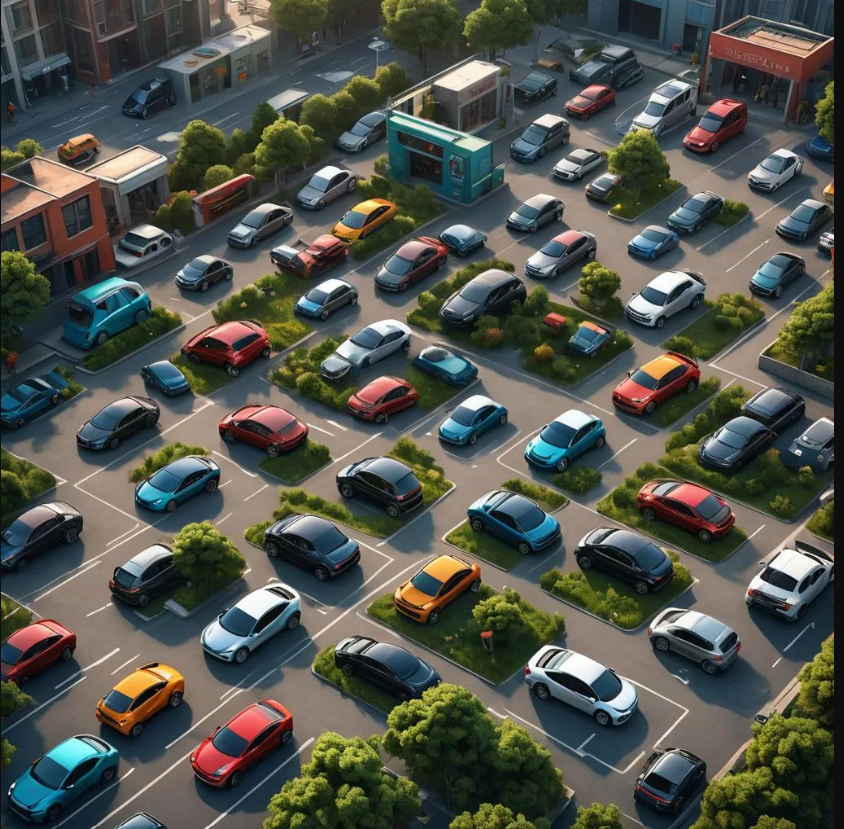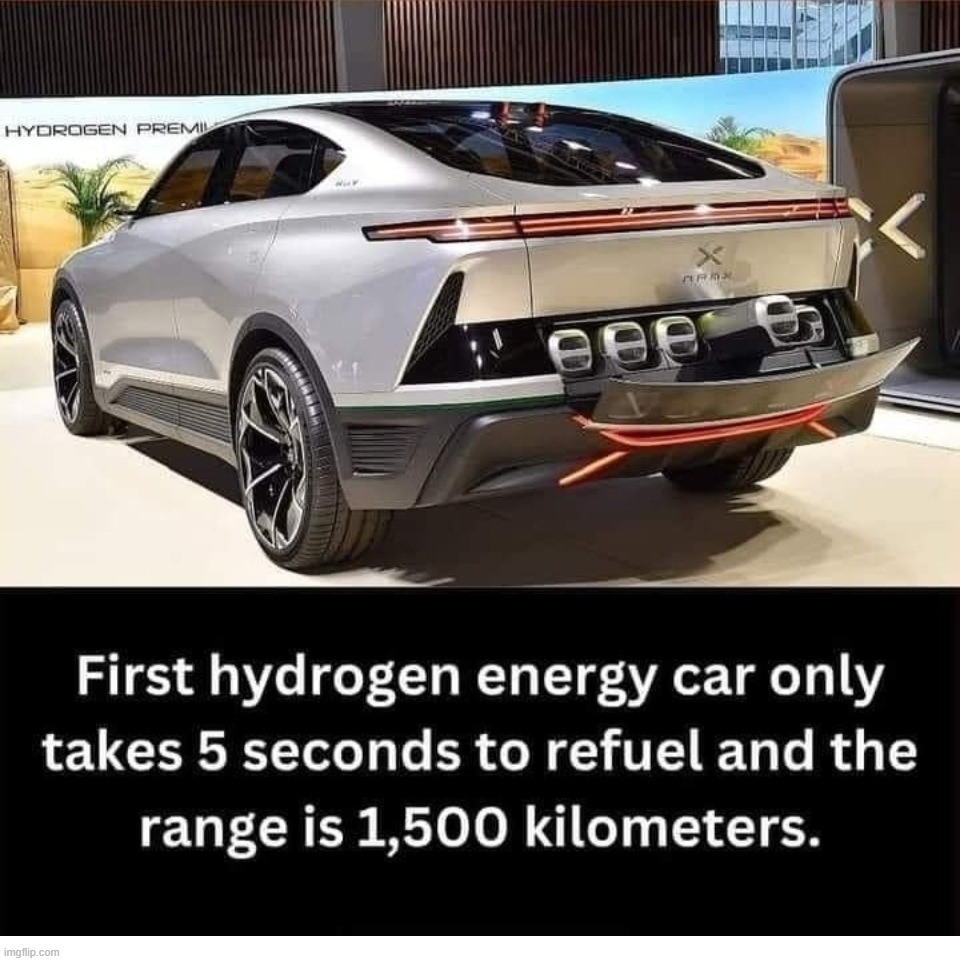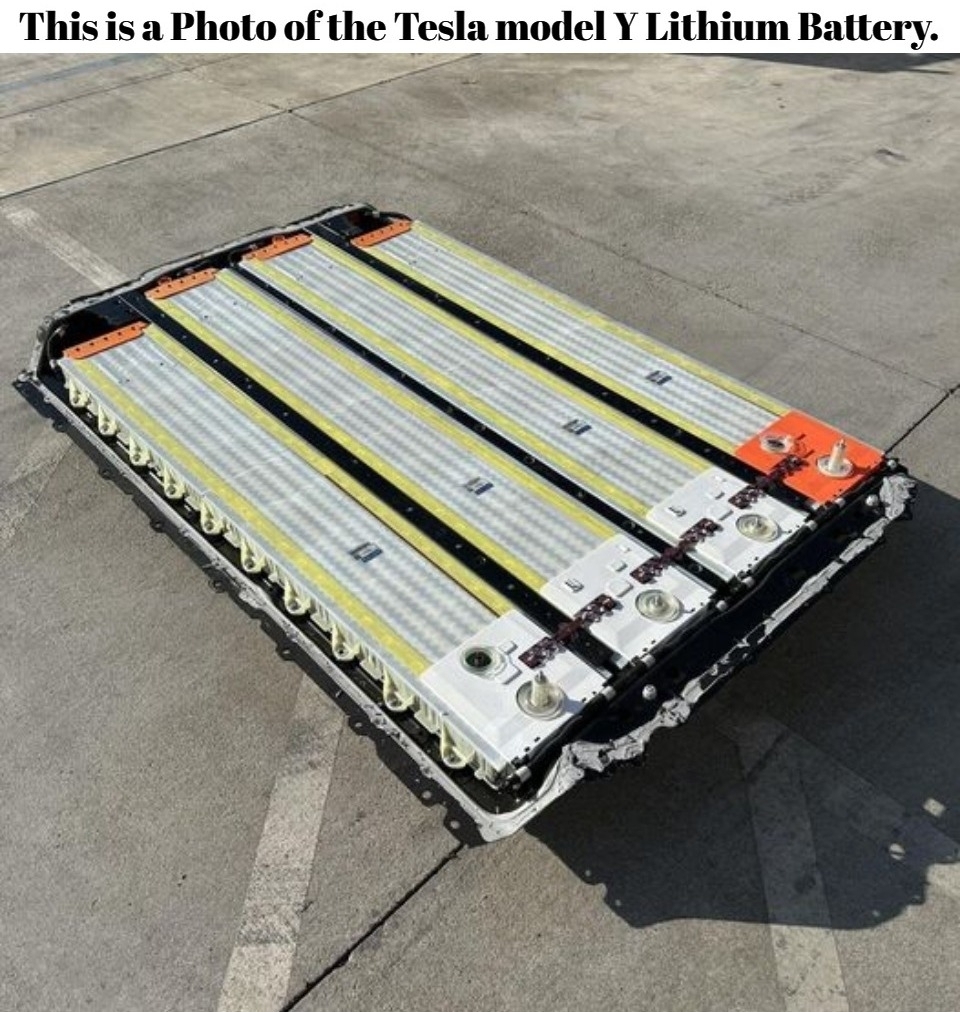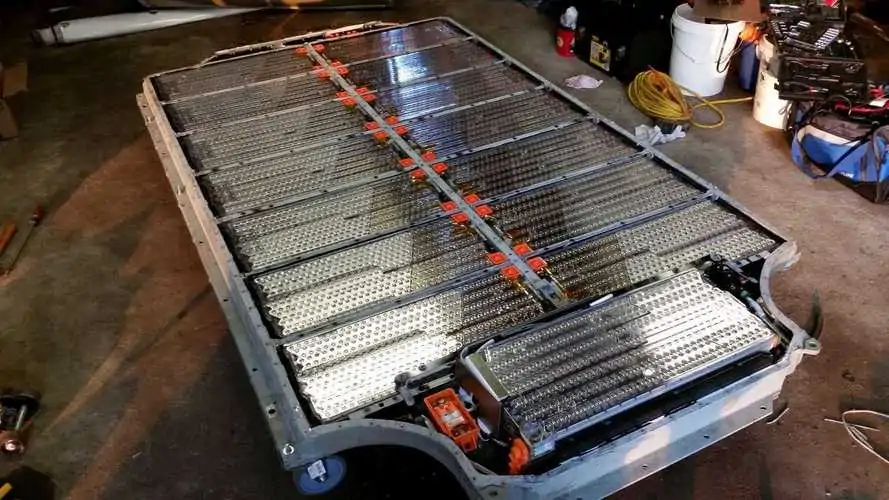This is a Photo of the Tesla Model Y Lithium Battery.
This photo below is a Tesla model Y battery. It takes up all of the space under the passenger compartment of the car. To manufacture it you need:
--12 tons of rock for Lithium (can also be extracted from sea water)
-- 5 tons of cobalt minerals (Most cobalt is made as a byproduct of processing copper and nickel ores. It is the most difficult and expensive material to obtain for a battery.)
-- 3 tons nickel ore
-- 12 tons of copper ore
You must move 250 tons of soil to obtain:
-- 26.5 pounds of Lithium
-- 30 pounds of nickel
-- 48.5 pounds of manganese
-- 15 pounds of cobalt
To manufacture the battery also requires:
-- 441 pounds of aluminum, steel and/or plastic
-- 112 pounds of graphite
The Caterpillar 994A is used to move the earth to obtain the minerals needed for this battery. The Caterpillar consumes 264 gallons of diesel in 12 hours.
The bulk of necessary minerals for manufacturing the batteries come from China or Africa. Much of the labor in Africa is done by children. When you buy an electric car, China profits most.
This is the 2021 Tesla Model Y OEM battery (the cheapest Tesla battery) currently for sale on the Internet for $4,999 not including shipping or installation. The battery weighs 1,000 pounds (you can imagine the shipping cost). The cost of Tesla batteries are:
Model 3 -- $14,000+ (Car MSRP $38,990)
Model Y -- $5,000–$5,500 (Car MSRP $47,740)
Model S -- $13,000–$20,000 (Car MSRP $74,990)
Model X -- $13,000+ (Car MSRP $79,990)
It takes 7 years for an electric car to reach net-zero CO2. The life expectancy of the battery is 10 years (average). Only in the last 3 years do you start to reduce your carbon footprint, but then the batteries must be replaced and you lose all gains made.
Let's not forget that if they catch fire, you cannot put the fire out because it burns so hot. The best you can do is get as far away from the fire as you can until it burns itself out.
But by all means, get an electric car. Just don't sell me on how awesome you are for the environment. Or for human rights.
https://imgflip.com/i/8j9uamThis is a Photo of the Tesla Model Y Lithium Battery.
This photo below is a Tesla model Y battery. It takes up all of the space under the passenger compartment of the car. To manufacture it you need:
--12 tons of rock for Lithium (can also be extracted from sea water)
-- 5 tons of cobalt minerals (Most cobalt is made as a byproduct of processing copper and nickel ores. It is the most difficult and expensive material to obtain for a battery.)
-- 3 tons nickel ore
-- 12 tons of copper ore
You must move 250 tons of soil to obtain:
-- 26.5 pounds of Lithium
-- 30 pounds of nickel
-- 48.5 pounds of manganese
-- 15 pounds of cobalt
To manufacture the battery also requires:
-- 441 pounds of aluminum, steel and/or plastic
-- 112 pounds of graphite
The Caterpillar 994A is used to move the earth to obtain the minerals needed for this battery. The Caterpillar consumes 264 gallons of diesel in 12 hours.
The bulk of necessary minerals for manufacturing the batteries come from China or Africa. Much of the labor in Africa is done by children. When you buy an electric car, China profits most.
This is the 2021 Tesla Model Y OEM battery (the cheapest Tesla battery) currently for sale on the Internet for $4,999 not including shipping or installation. The battery weighs 1,000 pounds (you can imagine the shipping cost). The cost of Tesla batteries are:
Model 3 -- $14,000+ (Car MSRP $38,990)
Model Y -- $5,000–$5,500 (Car MSRP $47,740)
Model S -- $13,000–$20,000 (Car MSRP $74,990)
Model X -- $13,000+ (Car MSRP $79,990)
It takes 7 years for an electric car to reach net-zero CO2. The life expectancy of the battery is 10 years (average). Only in the last 3 years do you start to reduce your carbon footprint, but then the batteries must be replaced and you lose all gains made.
Let's not forget that if they catch fire, you cannot put the fire out because it burns so hot. The best you can do is get as far away from the fire as you can until it burns itself out.
But by all means, get an electric car. Just don't sell me on how awesome you are for the environment. Or for human rights.
https://imgflip.com/i/8j9uam





